Mark Sisson's Blog, page 332
July 25, 2013
Why You Absolutely Must Play, Every Day! (plus 10 Pointers for Successful Playtime)
I’m grateful to have our friend Darryl Edwards, fitness explorer and creator of the PRIMALity movement system, pen today’s guest post. Meet Darryl in-person and get expert instruction on how to make activity truly fun at PrimalCon Vacation Tulum Mexico 2014.
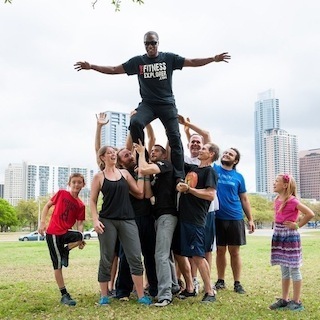 “We do not stop playing because we grow old, we grow old because we stop playing”
“We do not stop playing because we grow old, we grow old because we stop playing”
– George Bernard Shaw
When was the last time you played? I mean really played. You might regard organised sport as playtime or going to a party and getting drunk as play, but what I am actually talking about is play that is activity based on unadulterated and joyful movement. When children are asked what they think is important in life, play is often at the top of the list. Of course, most of us reading this article are no longer children, so how is this relevant to us as adults?
Play is not difficult to justify. Playful movement promotes practical strength, balance, agility, coordination, speed, skill and mental focus. Play unlocks the mind, it samples endless possibilities, it seeks and finds new levels of creative opportunities. Play is key to physical, mental, and social well-being, but it is often underrated and viewed as superfluous. Play is endemic to human development – a biological necessity based on our survival. As Stuart Brown the founder of the American National Institute for Play states “When we stop playing, we start dying…” Play is life!
Punishment, Not Enjoyment!
Yet when it comes to exercise and activity adults still tend to opt for a workout rather than a play-out. I often get posed the question by my clients. “Why should we play, Darryl? I have better things to do with my time!” As is the case in most instances, the question is easily asked, but the answer is somewhat elusive. I usually respond by introducing them to a playful activity that challenges their perception of fitness. For example, doing an arm wrestle against a partner whilst standing on one leg (get a play partner and try it to see what I mean!)
One observation is that the fitness industry has a preference for sweat, pain, and suffering. With exercise we mistakenly believe we need to undergo significant sacrifice in order to get fit. We should be punished for even thinking about being sedentary. Despite lip service to the contrary, “No pain, no gain!” remains the industry mantra.
The path on this painful journey may be endurance based such as long-distance running or multi-discipline endurance (swim, bike, run) or ultra endurance races – because 26 miles isn’t enough? There is also the let’s-get-cross-and-fit-and-work-as-hard-and-as-fast-as-possible-camp, whose workouts of choice produce an inevitable collapse into a heap, and puking is the ultimate evidence of their commitment to hard work.
There is the pursuit and sacrifice of sculpting a body as if hewn out of clay by pumping iron and isolating certain body parts to build muscle, working to failure rather than success – without a hint of irony! There are also the movement disciplines, which focus on technique, skill and form above all else, reserved for the elite few who have the effort, money and patience to achieve the movement of genius. Another category becoming increasingly popular are long distance challenge-type runs with mud or military style obstacles. Are you man or woman enough to attempt – and suffer through – these challenges?
Of course don’t get me wrong there is a time and a place for hard work, and I’ve done my fair share of it. What I am suggesting is that we should find time for serious play too.
But Darryl, Isn’t Play Just For Kids?
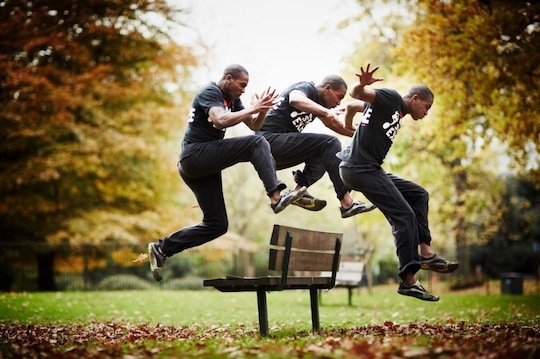
Well play can be confusing for us adults; it is either seen as frivolous, deemed as foolish, or blanketed as childish activity related to relieving boredom with no well-defined goals. Adults often judge play as an unnecessary task even for their children. Instead, they encourage their children to pursue more organized activities based on education or those leaning towards “sporting” talent. Due to our warped attitudes on the subject, time for spontaneous play is more and more difficult to come by. It’s ironic that we now pay other people to teach our kids how to play!
Consider these comments by David Elkind in the American Journal of Play:
School administrators and teachers – often backed by goal-orientated politicians and parents – broadcast the not-so-suitable message that these days play seems superfluous, that at bottom play is for slackers, that if kids must play, they should at least learn something while they are doing it.
– Elkind (2008) “The Power of Play: Learning what comes naturally”, American Journal of Play1
There are two aspects of play that are particularly relevant to us as adults: progressive play and imaginative play.
Progressive play serves the purpose of advancement – advancing from young to old through the function of play: Imagine a kitten practicing how to pounce, which is a precursor to catching prey. Or, a child learning how to climb a tree, developing tactics to manage risk as well as the ability to climb.
Imaginative play utilises techniques such as visualisation and focus to make you “work” harder. This is one reason athletes often use visualisation when training to improve their athletic performance. Research demonstrates that visualisation brings about quantifiable improvements as well as psychological changes.2 Studies also suggest that using mental imagery for movement can create similar electrical activity in the muscle as that seen during actual movement.3
Setting an Example for Our Kids
One thing we understand as parents is that our kids are influenced by what we do or do not do as adults. If we demonstrate movement as being punitive, then our children will see movement and activity as punishing and something to fear. If we are playful and excited about activity, it gives our children an opportunity to enjoy movement too. Play is an essential activity regardless of age. As adults, it is absolutely critical to learn how to play again!
So What Can We Do?
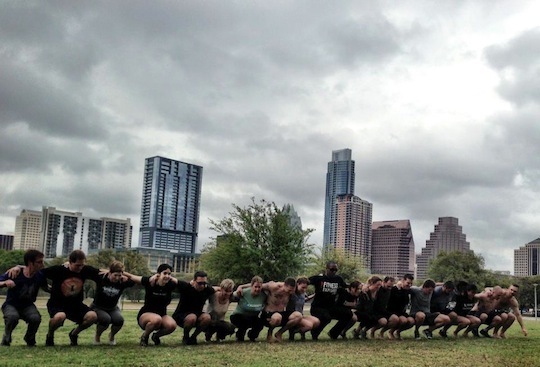
Playful movement does not need to be complicated. Lay it out in terms of basic movement patterns. Moves that are functional and possible to adapt for all – with challenges that can be scaled to each individual. You can piggy-back carry, focus on animal crawls and movements, or play games such as tag. In fact – even better – create your own games! What is the main beauty of this? The process of creating your own ad hoc set of play is more rewarding then following a set prescription of moves.
10 Pointers for Play
We should seek to reclaim the enjoyment of movement that we experienced as children
Make it BIG (broad, inclusive and general)
Make sure play includes the active participation of others
Make it fun with a small element of risk (imaginary or otherwise)
Make play unpredictable and prepare for the unexpected
Abide by the rules, change the rules, break the rules, have no rules
Use the natural environment as your playground
Use each other as “exercise” equipment
Get children (and adults) to create the scenarios
Minimise structure, time intervals and penalties – encourage real-world movement, imagination and rewards
1“The Power of Play: Learning what comes naturally”, Elkind, American Journal of Play, 2008
2“Advances in Sport Psychology”, Champaign IL, Human Kinetics, 2002
3“Motor Control and Learning”, Champaign IL, Human Kinetics, 1999
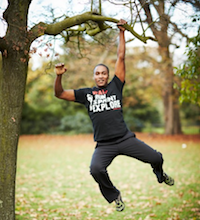 Darryl Edwards
Darryl EdwardsDarryl Edwards is the author of “Paleo Fitness”, and founder of Fitness Explorer Training & Nutrition based in London, England. He is the creator of the PRIMALity movement system, and world-renowned as an expert teacher, lecturer and practitioner of the Paleo lifestyle. He will be hosting “Primal Playout” playshops during August in the US and is a resident coach at PrimalCon events. You can learn more about Darryl’s work at The Fitness Explorer.
Catch Darryl at PrimalCon Vacation Tulum Mexico next March. And check out this testimonial video from PrimalCon Austin 2013 attendees.
Join Mark Sisson and Friends at PrimalCon Vacation Tulum Mexico in 2014!

July 24, 2013
Primal Egg Coffee: The Best Part of Waking Up?
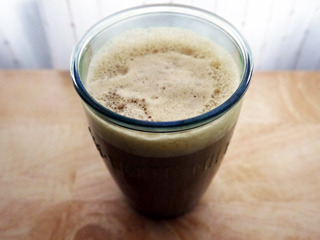 Bulletproof coffee has taken the paleo world by storm. Not me, though.
Bulletproof coffee has taken the paleo world by storm. Not me, though.
Don’t get me wrong. I’m all for people dropping grass-fed butter and coconut/MCT oil into their high-quality coffee, blending it all up into a high-octane mug of frothiness, but I just can’t get into it. If we’re talking coffee additives, I prefer my butter in the form of cream. That’s me. I definitely see the appeal of it, though, and I’m sold on the merits of the drink and its components. It’s just not for me.
However, the idea of adding non-traditional fatty food items to coffee intrigued me, so I decided to explore other options. Eventually, I landed on eggs.
Why eggs?
Egg yolks are excellent emulsifiers. There’s the egg yolk lecithin, a famous emulsifier, plus several different egg yolk proteins with emulsification properties. Good yolks are prized by top chefs around the world primarily for their emulsifying ability. Egg yolks smooth out sauces, salad dressings, and relations between bitter enemies like oil and water. That’s right: egg yolks are the great unifiers of the food world. Throw some olive oil, lemon juice, salt, and pepper into a bowl, whisk it all together, and you’ll have a lovely stratified bowl of fluids of different shades. Oh, they might appear to blend together into a dressing for a second or two, but once you look away, the old immutable divisions will rear their heads and the dressing will disappear. Add an egg yolk or two, though? You’ll get a silky smooth salad dressing that remains so for time immemorial.
If you don’t have a blender but still want a smooth, creamy coffee drink, hand-frothing an egg yolk with a fork or whisk will get you there. Hand-frothing butter and coconut oil requires vigorous labor and may not even achieve full emulsification.
Eggs are incredible sources of micronutrients. While I love grass-fed butter, cream, and coconut oil, they aren’t exactly micronutrient-dense. The best butter contains beneficial nutrients like vitamin A, omega-3s, vitamin K2, and butyric acid, while coconut oil is a unique source of medium chain triglycerides, but for the most part we eat those foods because they are sources of stable, healthful saturated fats. They provide energy. Egg yolks, on the other hand, are baby bird building blocks. They contain everything you need to build an entire working animal from scratch – all the vitamins, minerals, protein, and fatty acids that make life work. And, if you get a pastured egg – which you should if you know what’s good for (and your omelets) – your yolk will be supercharged, with extra choline, vitamin E, vitamin A, vitamin K2, omega-3 fats, vitamin D, and beta-carotene from all the bugs and greens the chickens ate.
I love eggs, particularly the yolks, and enjoy adding them to everything. They’re a solid, dependable, go-to breakfast item, they’re good for you, and they taste great. What more can you want? That’s why they ended up on my list of foods I couldn’t live without, and that’s why they ended up in my coffee. In the end, I just love eggs, and since I already add them to just about everything, I figured “why not coffee?”
Are there any potential problems with adding eggs to coffee?
Oxidation springs to mind. Not only are you subjecting egg yolks to heat, you’re also whipping oxygen into them. It seems like the perfect storm of lipid oxidation, no?
I’m actually not too worried. First of all, the coffee really isn’t very hot. It’s well under boiling.
Second, coffee is a rich source of antioxidants – you know, those things whose primary job is to prevent oxidation. Whereas bathing fragile fats in a boiling bath of water might promote oxidation, coffee is essentially an antioxidant-rich broth. Marinating meats in herbs, wine, and citrus juice seems to prevent oxidation, and I’d bet that coffee can have similarly protective effects. Drinking coffee sure protects LDL particles from oxidation via incorporation of coffee polyphenols into said LDL particles; why wouldn’t coffee polyphenols frothed up with egg yolk offer similar protections to egg phospholipids?
Third, the actual blending/frothing only takes place for a few seconds. It’s relatively short-lived, probably not long enough to be a problem.
Fourth, the vitamin E in egg yolks is there to prevent oxidation. It’s quite good at it. Coincidentally, this is why you should get pastured eggs if possible. The yolks of pastured eggs contain upwards of four times the vitamin E found in standard battery egg yolks.
What about raw egg white’s tendency to bind biotin? Raw egg whites have the well-publicized ability to bind biotin (found in the yolk) and prevent its absorption. Luckily, the binding ability of avidin begins to break down at 158 ºF (70 ºC) and is almost completely degraded at 185 ºF (85 ºC). Since coffee is ideally brewed with water running between 190 and 200 ºF, the finished product should be able to keep avidin from binding your biotin.
But why eggs and coffee?
I stumbled upon something I had never heard of until recently – Vietnamese Egg Coffee – and decided to experiment in the kitchen.
Now, let’s get right to the recipes themselves. As you’ll see, they’re not all that complex. You’re basically just adding eggs or egg yolks to coffee. Still, though, read on to see exactly how I did it.
Primal Egg Yolk Coffee
I did a little playing around with this and tried several different recipes. In the end, I think I came up with a solid recipe. Ingredients:
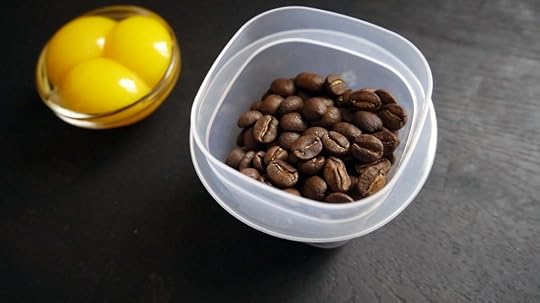
1 1/2 cup (350 ml) coffee
3 pastured egg yolks
1 tsp sugar
1/4 tsp of salt
First, I brewed the coffee (35 grams of coffee beans – I used a light roast, single-origin bean) in a French press. Dumped the grinds in, added about 350 ml of water, gave it a quick stir, covered it, and let it sit for three minutes. Meanwhile, I separated the yolks from the whites. Once the coffee was ready, I dumped it in a blender, set it to “low,” and dropped in the yolks. After a few seconds, I added a teaspoon of sugar and a pinch of salt (around a quarter teaspoon) and let it blend a bit more. Then, I poured it, admired the head of foam, and got to drinking.
I tried fewer yolks and found the brew too thin. I tried more yolks and found it to be unnecessary. Three yolks was perfect. If you want to switch things up, you can add something a little sweet like I did. I added my usual teaspoon of sugar, plus a quarter teaspoon of Himalayan sea salt. Honey, maple syrup, or stevia should all work well, too. The salt may sound odd, but trust me: it just works as long as you use a little sweetness to counterbalance it.
Primal Whole Egg Coffee
Think of this as a whole foods-based protein shake. Ingredients:
1 cup (240 ml) coffee
2 pastured eggs
1 tsp sugar
Pinch of salt
I started by beating the eggs together, whole, as if you were making scrambled eggs. You could also blend them. For a 1 cup dose of coffee, I did two whole eggs. Once the eggs are beaten or blended, slowly drizzle in the coffee. You don’t want to cook the eggs. You want them to stay creamy. If you’re really concerned about the avidin in the raw white, dump the coffee in to ensure maximal heat exposure. Otherwise, just drizzle.
I think a higher egg:coffee ratio (using a large shot of espresso, for example) for a stronger coffee flavor would work really well. Also, two eggs in this recipe created a nice and creamy concoction. I suspect three eggs might even be better.
Again, I added a little sweetener plus some salt. It made the coffee taste a bit like a liquified custard. Really, really tasty.
Adding Other Ingredients
I also tried out a few other additions to the brews, to see how they meshed with the eggs. Consider adding these:
Cinnamon – Goes great with coffee, provides insulin sensitizing benefits.
Turmeric – Anti-inflammatory spice, works well with cinnamon.
Vanilla – Tastes good, smells better. May have anti-inflammatory effects. Also works well with cinnamon (but not so much with turmeric).
Butter and coconut oil – If you dig Bulletproof coffee, adding egg yolks makes it even better.
Use Caution!
In the course of research for this post, I ingested five eggs plus five extra yolks along with several cups of moderately strong coffee. I don’t know if it was just an excessive amount of coffee or if the caffeine was potentiated by the phospholipids in the yolks, but I felt like I was under the influence of… something. Although it was a good feeling, a productive feeling, to be sure, I could see it getting out of hand if taken too far. This is potent stuff. A cup or two is probably ideal, at least for me.
“Sugar – really?”
Don’t worry about a little sugar, even the white stuff. The amount I added, a teaspoon, is just four grams of sucrose. And, if you use an actual food like honey or maple syrup, which have different (improved) metabolic effects compared to plain white sugar, the potential downsides of ingesting sugar are lessened even more. Besides, you can always use a non-caloric sweetener like stevia, which has its own set of benefits.
Since writing this article a few weeks back, I’ve begun rotating egg yolk coffee into my morning routine. I don’t have it every day, but do have it several times a week, particularly if I have a busy day ahead of me where optimal productivity is required. Whole egg coffee seems to work well pre-workout, boosting energy, motivation, and providing a nice source of branched-chain amino acids for the training ahead.
What about you, folks? Want to give this a shot? Ever tried this yourself? Got any tips to improve my recipes? If you do try it, let me know in the comment section how it works out!
Limited Time Offer: Get a FREE Copy of Primal Blueprint Healthy Sauces, Dressings & Toppings When You Order Primal Fuel Chocolate Coconut or Vanilla Coconut Creme on Autoship>>

July 23, 2013
Are You As Healthy As You Think You Are?
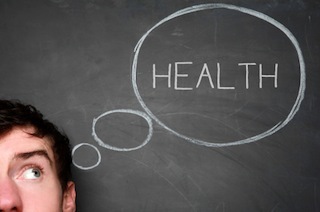 Like it or not, we’re in this whole life thing together. Whether you admit this or deny it, the people who surround you influence you. Rugged individualists, angtsy teens shopping at Hot Topic and blasting Linkin Park out of headphones permanently affixed to their ears, and everyone else may think they’re blazing a completely unique path and forging their own destiny without external input, but everyone is a product of their environment. Our identities aren’t even created in a vacuum; they are formed based on what the people around us are doing and how they’re living. We are reactions to the actions, circumstances, and personalities of other people, particularly those to whom we’re most frequently exposed.
Like it or not, we’re in this whole life thing together. Whether you admit this or deny it, the people who surround you influence you. Rugged individualists, angtsy teens shopping at Hot Topic and blasting Linkin Park out of headphones permanently affixed to their ears, and everyone else may think they’re blazing a completely unique path and forging their own destiny without external input, but everyone is a product of their environment. Our identities aren’t even created in a vacuum; they are formed based on what the people around us are doing and how they’re living. We are reactions to the actions, circumstances, and personalities of other people, particularly those to whom we’re most frequently exposed.
Why do we feel compelled to upgrade to a new car when new cars start showing up in our neighbors’ driveways?
Why do we go from feeling pretty darn content with our lives to feeling like losers just because we saw a Facebook post from an old classmate who’s backpacking through South America?
How do we suddenly become unhappy with our otherwise sufficient salaries once we hear what that guy over there makes in a year?
Why does the high school valedictorian often feel average once they get to college?
We’re constantly comparing ourselves to other people. Sizing them up. Sizing ourselves up (or down). That’s what we do. How we perceive others to be doing informs our perception of how we’re doing in life. So, if the people around us – or even the people we read about and see on TV and in movies – are good looking, rich, and charismatic, we might end up comparing our circumstances to theirs and feeling like failures if we don’t measure up.
No aspect of our lives is immune to this, not even our sense of physical health. In fact, I’d say that our ideas about our own health are profoundly informed by the health of people around us. Some of us can accurately gauge our health based on how we feel, look, and perform, but not all, or even most of us. Most of us (even the ones who say otherwise) determine our own healthfulness by comparing ourselves to others. We check out what the guy on the next bench over is lifting in the gym. We sneak a peek at what shirt size the other man or woman just returned to the rack to see how we compare. We smugly note that our officemates have all come down with the flu this season, while we’ve made it through unscathed.
And, by and large, we get it totally wrong when we try to estimate our own health. We think we’re healthier than we actually are, have less weight to lose than we actually should, and are more physically fit than the previous generations. America’s weight problem? That’s “everyone else.” “That’s not me”, you say. “I’ve got a few pounds to lose, sure, but I’m definitely better off than most everyone else.” No one is immune. Even overweight and obese kids are underestimating their weight. It’s like we have a rough idea of a weight constituting “overweight,” but because most people around us are hitting that weight, and because whatever most people do appears normal, we don’t realize it’s an issue.
That probably explains why obesity is contagious among friends and communities. If your peers are overweight or obese, you are more likely to be overweight or obese. You’re more likely to be overweight because overweight has become the norm. It may not be healthy, and you may intellectually “know” that it’s unhealthy, but if everyone around you is overweight and it’s just “how things are,” you’re more likely to fall into it.
Even seemingly objective health measurements taken by a doctor are subject to this community effect. They determine our health, as represented by objective blood markers and BMI readings and blood pressure measurements, by comparing our numbers to the numbers of rest of the population. That’s why when you get a lab result you have a reference range. The reference range purports to tell you whether you’re healthy (within range) or unhealthy (out of range, either too high or too low), but often, what it’s really doing is telling you how your numbers compare to everyone else’s numbers. They try to use only “healthy people” to determine the reference ranges, but each lab has a different range and uses a different sample population, and you can’t really be certain that the healthy people are actually healthy and thus have numbers worth pursuing. What is “healthy,” anyway, since we just established that a perception of health is subjective and susceptible to influence? The overworked stressed-out 35 year old manager, the skeletal 35 year old shuffling down the street in floppy running shorts, the fit 35 year old CrossFitter, the dumpy 35 year old dad of three – these people could be “healthy” enough to qualify for the test establishing the reference range for a given lab result.
Are You Normal or Just Common?
With all that in mind, are you normal or are you just common? Just because something is common doesn’t make it normal. For humans in the United States and other developed nations, being overweight and on pills is common. For the human animal given access to sunlight, good food, regular movement, and a healthy happy community life, leanness and effortless metabolic health are normal. That’s the normal we should be aiming for, not the common state of health we see on a daily basis.
You may not be as healthy as you think you are. I think you can do better. Don’t compare yourself to the sick and the overweight. Don’t use them as your baseline measure of health. Instead, compare yourself to the normal human, who is not and should not be riddled with degenerative diseases, carrying 23 pounds of extra unwanted weight, nor filling a dozen prescriptions per year.
Are you eating well, are you just eating better than most people around you? It’s not that hard to do better than bastardized tacos made from Dorito shells, frozen french fries that you toss in the oven, iceberg lettuce salads, and Lean Cuisine. Doing better than that doesn’t mean you’re actually eating as healthily as you could.
Are you truly active enough, or are you just more active than the couch potatoes around you? It’s pretty easy to exercise more and walk more steps than people who’ll circle the parking lot for ten minutes searching for that perfect spot right next to the disabled parking.
Are you feeling less than awesome, even though your lab numbers are “within range”?
Are you living up to your incredible heritage as a human? Are you getting fresh air and some semblance of sunlight everyday? Are you moving frequently at a slow pace? Are you lifting heavy things? Do you have a community, a tribe, even a small but loyal one?
We’ve got a lot of hurdles standing in our path toward optimal health, hurdles that Grok never had to face. Though we’ve got modern medicine on our side, and the masterful mechanics of the human body known as surgeons are sure nice to have around, we’ve also got sedentary jobs, countless hours of passive entertainment at our fingertips, delicious industrialized food practically designed to disrupt our endocrine systems and override our satiety mechanisms, and an agricultural system that places profit over human, environmental, and animal health all working against us. And yet we can still be healthier than we are. We don’t have to settle for what we see around us.
Be honest when you answer these questions. You may very well be as healthy as you think you are and want to be – from what I can tell from Primal meetups and the emails I get, you all are a healthy bunch – but I think even many of us can do better.
Thanks for reading, folks. I’d love to get your thoughts. How do your surroundings affect your perception of your own health?
Get the 7-Day Course on the Primal Blueprint Fundamentals for Lifelong Health Delivered to Your Inbox for FREE

July 22, 2013
Dear Mark: Barefoot Criticism and Salmon Roe
[image error]Today’s edition of Dear Mark is just a two-parter. We’ve got a question about the recent flurry of anti-barefoot/minimalist footwear criticism. In my opinion, it’s pretty weak criticism, and I’ll explain why I don’t think you need to ditch your Vibrams for some orthotics just yet. After that, I answer a question from an extremely lucky woman who’s just come into possession of an entire gallon-sized bag of fresh Alaskan salmon roe. She doesn’t know what to do with them. I wish I had her problems. Don’t you?
Anyway, let’s get right to it:
Hey Mark:
I haven’t seen a post on barefooting on your blog in a while. I ran across this article a couple of weeks ago and wondering if you were going to comment:
Is Barefoot-Style Running Best? New Studies Cast Doubt
Thanks for all of the amazing content!
Best,
Nick
If someone only reads the NY Times piece, they’re left with the distinct impression that barefoot running (or barefoot-style running) is pointless. But when you look at the actual study referenced in the article, you see that they kind of misinterpreted (or misrepresented) its findings.
Contrary to the article’s assertion that “heel striking was the more economical running form, by a significant margin,” the reality is that “no differences in Vo2 or %CHO were detected between groups when running with their habitual footstrike pattern.” In other words, rear foot strikers and forefoot strikers were equally economical with their running when allowed to run with their normal pattern. However, when rear foot runners were asked to try forefoot striking, their running economy suffered. Forefoot strikers asked to try heelstriking, on the other hand, did not lose running economy. This is easily explained by the fact that most people nowadays – even the forefoot strikers buying out the latest Fivefingers – grew up running heel-first while wearing big clunky shoes. So, in a way, heel striking “feels right.” Forefoot strikers can usually “switch back” to heel striking without their efficiency suffering because they grew up running that way, and this study is evidence of that. Lifelong heel strikers switching to forefoot striking are faced with something they’ve likely never done since they were barefooted children playing tag or Red Rover or Steal the Bacon. It’s completely new to them. Most heel strikers I see trying to run barefoot or with a forefoot landing for the first time end up bouncing on their toes like boxers. Rather than gliding smoothly forward with minimal head bob, as seen in experienced forefoot strikers, newbies often bounce up and down. This wastes a ton of forward momentum and energy and severely hampers running efficiency.
We should also note that they used “running flats” for the study. Unless otherwise specified, “running flats” still have a heel drop. Even minimalist shoes, like the New Balance Minimus, still retain a couple millimeters of difference between the heel height and the sole height. If the running flats used in this study had a sizable heel drop, that’s going to make forefoot striking rather awkward, because you have to avoid that heel as you land. These weren’t minimalist shoes, let alone bare feet.
They mention a couple other studies in the article, too. First, they discuss one in which ten weeks of running in minimalist shoes failed to increase arch height. I’m entirely unsurprised. Ten weeks is a blink of an eye. It’s simply not enough time to undo decades of shoe-wearing. Arches don’t collapse in a matter of weeks, after all.
Another study consisted of researchers asking a bunch of runners about their experiences with minimalist footwear. A third of the 566 polled runners had tried minimalist footwear. 32% of that third reported injuries they attributed to running in said footwear. “Many” had switched back to their normal shoes. Again, entirely unsurprising. Forget barefoot running. You have to ease your way into simply walking barefoot, if you’ve spent most of your life in heeled shoes.
Then there were other minimalist running studies that found “no significant benefits” (which probably means there were some insignificant ones) to running economy. Okay.
Is “running economy” really what people who run barefoot or in minimalist shoes are going for? No; it rarely figures into most people’s motivations. Instead, minimalist runners do it for:
The increased sensory feedback from the foot-ground contact without a big slab of rubber getting in the way. This improves the runner’s proprioceptive awareness and allows quicker, unconscious reactions to changes in terrain.
The “lightness” of running without foot coffins. It’s hard to quantify, but there’s something about running in minimalist shoes, or none at all, that makes you glide across the landscape and kiss the ground as you do it.
The overall experience of feeling the actual world beneath your feet. There’s a great Ram Dass quote that goes something like “If you wear leather on your feet, the whole world is made of leather.”
Most of all, the reduction in “standard” running injuries. When I ask most people why they switched to barefoot running, it’s to avoid the chronic pain they’d come to expect as just part of the hobby. When I ask them whether it seems to have helped, they almost invariably say “yes.” From my experience, it only makes things worse when they pick things up right where they left off without bothering to condition their bodies or get accustomed to the new way of running. The scientific literature mostly bears this out:
Knee pain: Most recently, barefoot running reduces patellofemoral (knee) joint stress. Another study also found that forefoot landings result in less impact to the knee, but greater loading on the Achilles tendon; luckily, the Achilles tendon is basically made to absorb stress, while the knee arguably has a lower capacity for loading. Yet another study came to the same conclusion.
Chronic exertional compartment syndrome (CECS): CECS is an exercise-induced nerve condition that causes swelling and pain to the affected muscle. In one study, runners with CECS in the legs were able to increase their running speed and running distance while decreasing their pain levels by switching to a forefoot landing. Another study in CECS patients had similar results.
It all comes down to time. Human bodies are incredibly malleable and adaptive. You put us in an uncomfortable, unnatural position, and we’ll adapt to it. We may not flourish, but we’ll certainly survive. Bad, overly cushioned shoes are a perfect example of that. We adapt to wearing those shoes. To go from that back to barefoot/minimalist running takes time, even though it’s arguably the most natural way to do it. For many of us, shoes have become “natural.” This can be overcome, but it takes time, attention to proper form (or expert instruction) and an honest self-assessment of one’s abilities.
Hi Mark!
I love your blog! You are my most reputable resource I go to when I have a nutrition question.
Anyway, I live in Anchorage, AK. My boyfriend is HUGE into hunting and fishing. He has been his whole entire life. Well, he just got back into town from dipnetting at Kasiloff and brought home 20 Red Salmon. We were fileting, gutting, washing, and vacuum sealing the salmon. He asked me if I wanted the fish eggs. I said HELL YEAH! I don’t know what I am going to do with them but I will figure it out.
So….My question is ….
If you had a gallon-size Ziploc baggy of Salmon Roe, what you would you do with them? How would you prepare them?
I am super excited to try them.
Thank you for your time.
Ashley from Alaska
Although by the time this answer reaches you, the roe will likely have spoiled or been eaten, I’ll give you a few thoughts.
In my opinion, the very best way to store salmon roe is to salt or soy-sauce cure them first. It’s not too hard to prepare, either. Here’s a basic salt-cure:
Fill a large bowl with warm (around 100 ºF) water and a generous amount of salt. You’re basically creating a brine.
Place the roe in the water and let it sit there for half an hour.
After half an hour, rinse the roe in warm water and carefully remove the skeins (the sacs holding the eggs together).
Once all the skeins have been removed, including the bits, place the eggs back in the brine for a few minutes.
Strain out the brine. Shake the colander to get the eggs as dry as possible, then place into sterilized canning jars. The roe will be good for a couple weeks in the fridge and longer in the freezer.
Here’s a basic soy-sauce cure:
Run the roe under warm water, about as hot as you can handle, to help you remove the skeins. Do this over a colander to prevent any lost roe.
Once all the skein has been removed, place the rinsed and cleaned roe into a glass container.
Add soy sauce and any other seasonings (sake and mirin are popular) and stir until all eggs are evenly coated. Cover the container and place in the fridge.
Enjoy for the next few days. Freeze what you don’t eat. A vacuum sealer will get you the most air-tight seal, but you’ll want to pre-freeze the roe to keep them from being crushed. If you don’t have a sealer, you can just stick them in a good ziplock bag and suck the air out with your mouth, then put that ziplock into another ziplock freezer bag (suck the air out of that one, too).
As for what to do with your cured roe, you can spoon them into your mouth direct and savor the *pop* of the eggs as they burst in your mouth, coating your tongue in phospholipid-enriched brininess. You can add a few spoonfuls to a plate of scrambled eggs (eggs on eggs) or an omelete. You can mash it up with lemon juice, pepper, olive oil, and diced shallots for a lovely vegetable dip. I bet you could even make mayo with them, allowing the roe to stand in for some of the egg yolk (you’d probably have to play around with the ratios, and the texture might not fully replicate regular mayo, but whatever you ended up with would be worth eating) and salt.
You can also treat the whole roe sac as an ingredient. Maybe beat an egg, dip the sac in the beat up egg, dust the sac with coconut flour, salt, and herbs, and pan fry the sac in your choice of healthy fat. Good luck!
That’s it for this week, folks. Thanks for reading!
Get the 7-Day Course on the Primal Blueprint Fundamentals for Lifelong Health Delivered to Your Inbox for FREE

July 21, 2013
Weekend Link Love
 If you’re an ancestral health-minded physician, make sure to sign up for the Primal Docs network and Paleo Physicians Network. People need you!
If you’re an ancestral health-minded physician, make sure to sign up for the Primal Docs network and Paleo Physicians Network. People need you!
Like farmers who do things the right way? Enjoy bacon from pastured pigs? Interested in protecting the former’s ability to provide you the latter? Check out this giveaway.
Research of the Week
Popular science authors often claim that hunter-gatherers were more warlike than modern humans and that our propensity for large-scale violence in the name of resource acquisition is an evolutionary adaptation – “mankind’s hereditary curse.” A new study of 21 “forager” societies – hunter-gatherers, in other words – undermines that popular view, finding that of 148 catalogued kills, just two were over “resources.” The vast majority were caused by “miscellaneous personal disputes” between individuals, not bands, tribes, or groups.
These side effects of artificial sweeteners might leave a weird aftertaste in your mouth, kind of like Sweet’N Low.
Interesting Blog Posts
How NomNom Paleo survives her night shift lifestyle.
Robb Wolf covers the latest omega-3 and prostate cancer study.
Media, Schmedia
According to Men’s Fitness, the Primal Blueprint is one of the six best new diets. My only quibbles would be with the words “new” and “diet,” but overall I’m pleasantly surprised.
Cholesterol levels have leveled off in Americans, but researchers (and, I’d wager, drug companies) aren’t satisfied. They want them even lower.
Everything Else
Enter to win a fantastic trip to Italy and get a great Everyday Paleo Italian cookbook (releasing July 23) from Sarah Fragoso in the process. Not a bad deal, I’d say.
I got a chance to read John Durant’s upcoming book, The Paleo Manifesto. It’s refreshing, hilarious, and informative, and I suggest you pre-order it.
Congratulations to Jamie for being the randomly selected winner of Thursday’s contest, and the lucky recipient of a copy of the new Primal Blueprint Publishing book Primal Cravings.
Recipe Corner
This kale walnut pesto works with just about any kind of meat you can imagine.
Whatever you do, don’t hand these lollipops out on Halloween (unless you get a lot of trick-or-treaters who are also dogs).
Time Capsule
One year ago (July 21 – July 27)
Are We Pre-Programmed to Be Happy? – The science of why feeling good feels good, plus what it all means for our health and happiness.
The Power of Daydreaming: Why You Should Let Your Mind Wander – Left to its own devices, the mind is an eager traveler. We should cultivate this; here’s why.
Comment(s) of the Week
Healthy deodorants can come in handy, but who in their right mind would use an antiperspirant? Clogging your pores from doing the job they were meant to do. It would be like putting a cork in your arse cuz you didn’t want to poop!
- Well, that’s certainly a powerful analogy.
Get the 7-Day Course on the Primal Blueprint Fundamentals for Lifelong Health Delivered to Your Inbox for FREE

July 20, 2013
Ginger and Lemongrass Meatballs with Braised Scallions
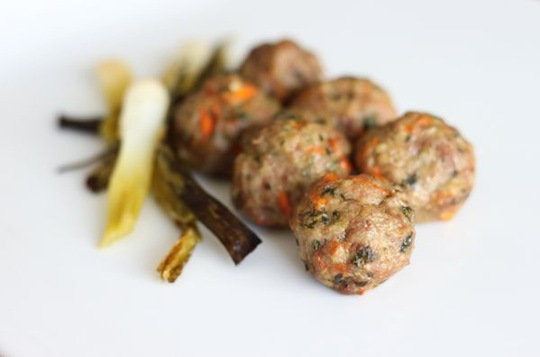 Ginger and lemongrass meatballs are so moist and uber flavorful that they don’t need any sauce. This blend of lamb and pork boldly seasoned with ginger, lemongrass, garlic, basil and cilantro will knock you out with flavor and aroma. Just serve the meatballs on a plate with a side of braised scallions for dinner or stash them all in the fridge for some high-protein snacking. Either way, you can’t go wrong.
Ginger and lemongrass meatballs are so moist and uber flavorful that they don’t need any sauce. This blend of lamb and pork boldly seasoned with ginger, lemongrass, garlic, basil and cilantro will knock you out with flavor and aroma. Just serve the meatballs on a plate with a side of braised scallions for dinner or stash them all in the fridge for some high-protein snacking. Either way, you can’t go wrong.
Meatballs are a terrific vehicle for getting more lamb into your diet. Why use ground lamb instead of beef? Lamb is a great source of B vitamins, niacin and zinc, and it’s one of the richest sources of CLA. If you want to make these meatballs entirely out of lamb, go for it. Just be extra careful not to overcook them, as it’s easy to overcook lamb resulting in a tough rather than tender meatball.
Speaking of which, the two tablespoon of water in the ingredient list? Water helps keep meatballs extra tender and moist. Don’t worry about the meat holding together, it will. Don’t skip the fish sauce either. It gives these meatballs mouth-watering umami flavor and saltiness (so don’t shake in more).
If you don’t try the braised scallions with these meatballs, keep the recipe in mind for another meal. Don’t we all end up with extra green onions in our fridge at one point or another? Instead of letting them go bad, throw those onions in pan with butter, coconut oil and water. You’ll end up with a side dish that brings a little bit of healthy sulfur into your life and a new addiction: the sweet, salty, crispy tips of braised scallions.
Servings: 30 small meatballs
Time in the Kitchen: 1 hour
Ingredients:
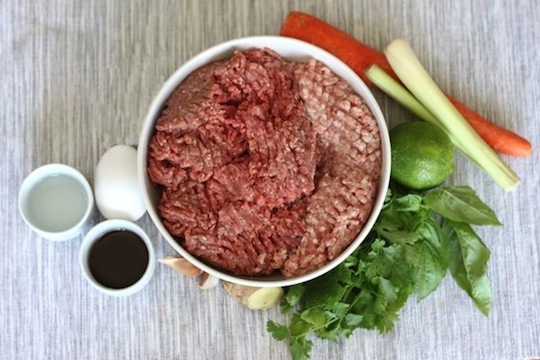
1 pound ground lamb (450 g)
1/2 pound ground pork (230 g)
1 egg, whisked
1 carrot, grated
1 stalk lemongrass
3 cloves garlic
1 1/2-inch piece of ginger, peeled and thinly sliced (3.8 cm)
1/2 cup roughly chopped fresh basil leaves (120 ml)
1 cup loosely packed fresh cilantro leaves (240 ml)
2 tablespoons plus 1 teaspoon fish sauce (20 ml)
2 tablespoons lime juice (30 ml)
2 tablespoons water (30 ml)
Braised Scallions
1 bunch of scallions (about 16 stalks),trimmed
1 tablespoon butter (15 ml)
1 tablespoon coconut oil (15 ml)
1/2 cup of water (120 ml)
Salt
Instructions:
Preheat oven to 375 ºF (190 ºC).
In a large bowl combine the ground meat with the egg and carrot.
Peel away the tough outer leaves of the lemongrass until a softer, pale yellow inner stalk appears. Cut off the bulb at the end of the stalk and discard. Thinly slice the lower half of the stalk for this recipe; the greener, upper half will be too woody and tough to use.
In a food processor, combine the lemongrass, garlic, ginger, basil, cilantro, fish sauce, lime juice and water. Blend until finely chopped, scraping down the sides a few times.
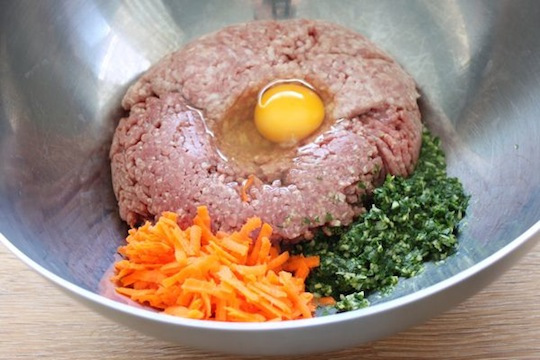
Gently mix the lemongrass/herb mixture into the ground meat. Form about 30 1-inch diameter meatballs. Don’t pack them too tight; gently formed meatballs that seem a little loose are more tender than tightly packed meatballs.
Place the meatballs on a broiler pan. Bake for 30 to 35 minutes or until just slightly pink in the middle.
Eat the meatballs immediately or keep them for several days in the refrigerator. Once cooled, the meatballs can also be frozen.
To make the braised scallions, lay the scallions in a buttered or oiled 9×13 rimmed baking dish. The scallions can be overlapping.
Cut the tablespoon of butter into small pieces and drop over the scallions. Drizzle the coconut oil and sprinkle salt on top.
Add the water to the pan and tightly cover the pan with foil.
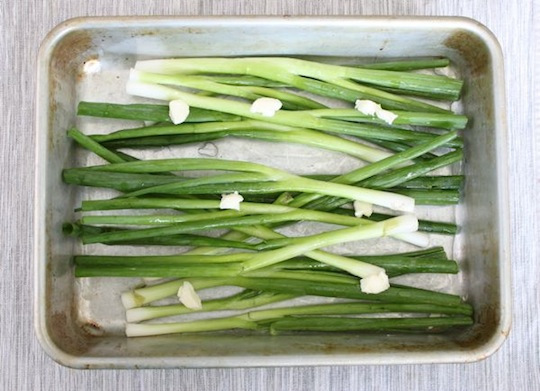
Braise for 30 minutes (can be in the oven at the same time as the meatballs).

Not Sure What to Eat? Get the Primal Blueprint Meal Plan for Shopping Lists and Recipes Delivered Directly to Your Inbox Each Week

July 19, 2013
The Primal Lifestyle Has Given Me a Life Worth Living
It’s Friday, everyone! And that means another Primal Blueprint Real Life Story from a Mark’s Daily Apple reader. If you have your own success story and would like to share it with me and the Mark’s Daily Apple community please contact me here. I’ll continue to publish these each Friday as long as they keep coming in. Thank you for reading!
 In my teens I had my palm read. One of the things the woman told me was that when I was 30, I would have a major health scare and then I would have the choice to become healthy or continue on the path to death. I scoffed and pointed out the absurdity of being able to choose.
In my teens I had my palm read. One of the things the woman told me was that when I was 30, I would have a major health scare and then I would have the choice to become healthy or continue on the path to death. I scoffed and pointed out the absurdity of being able to choose.
When I was 31, I had a major health scare.
At my wife’s Christmas party in 2011, I ended up in the bathroom throwing up blood. The previous year my physical and mental health had gone through a steep decline, but what happened in the bathroom was an undeniable symptom that couldn’t be excused away as “normal” anymore. I had gone from being the guy that never stopped; no physical task was too difficult, to not being able to bend over and tie my shoes due to pain. I went from the guy that had a photographic memory to the guy that couldn’t remember…well…anything.
I experienced all of the following:
Chronic heartburn, indigestion, diarrhea, crippling hunger yet loss of appetite when I sat down to eat, random nausea, debilitating joint pain and chronic muscle pain, body stiffness, chronic fatigue and a huge 3 o’clock wall, low energy levels, random chest pain (knife pick stabbing my heart type pain), mental fogginess, memory loss, mood swings and anger, low vitamin D, liver problems, low testosterone, sinuses plugged every night, foul gas, puffy face and hands, body odor, face and back acne, cracking joints, intense cold shivers, low sex drive, insomnia (tired but wired), rash on elbows, extreme anxiety, teeth grinding, headaches, loss of taste, constant fidgeting, no desire to get up in the morning because it felt like I had been trampled by a horse every night and balance problems when I did get up.
It’s like my body had just hit its’ limit. If this was what life was going to be like from then on, I came to the conclusion that I didn’t want to live it. And I was only 31 years old.

I went to my family doctor with a list of ailments my wife had written about me. She had to write the list because I was still in the mindset that I was unique, and these problems were just the way I was and it was normal. I came home with a referral for blood work, a specialist appointment for a stomach scope and a prescription.
I hadn’t lost my suspicion of prescriptions (from previous encounters with doctors and the “treat but not fix” mentality). I was not taking pills but I had to do something. So we went looking for alternative answers. My wife spent days on the internet reading. Searching about weight lifting for her and searching for an answer to my health problems ended up leading to the same website: Mark’s Daily Apple. And the same answer, the Primal Blueprint diet.
I wasn’t convinced of any of it, but had nothing left to lose. We went grain free and I stopped forcing myself to eat breakfast (we had also come across IF information). Three days in, when I stopped having to run to the bathroom after eating, I wasn’t convinced. Two weeks in, when I stopped waking up with sinus problems and had dropped 20 pounds, I wasn’t convinced.
After six weeks and no more heartburn and no body or joint pain and 35 pounds lost, I still was not convinced. It’s not that it didn’t make sense. It was that it was too easy. Every single person who “knows” more than me (doctors/parents/trainers), had always told me my whole life the exact opposite to what I was doing now: “Grains are a necessary food group; eat breakfast even if it’s just a granola bar; don’t eat too much fat; limit your meat consumption.”

I was angry that the information was out there, and people knew, and I had been suffering from problems so easily fixed my whole life. (There were other problems before that year of hell, just far less severe.) It was absurd that I actually did have a choice to be healthy, but was unaware of the choice.
A follow-up doctor appointment showed most of my previous problems were gone or had improved (documented with blood tests) and my doctor was shocked. He started asking questions and taking notes. And I never did fill that prescription.
It’s been 15 months since my wife and I changed our diet. I feel reinvented. I can physically and mentally take on the world now. I’ll happily tell anyone who asks what I did and help them on their journey. There will always be naysayers; and someone asked me what if turned out I was wrong, and eating like this was unhealthy. I told them it didn’t matter, I’d rather live five years feeling this amazing than a whole life the way I was before, as a pain riddled zombie.
My mother-in-law commented on how great I looked after I had lost 50 pounds; I responded that what she sees on the outside pales in comparison to the changes on the inside. Thank you to everyone who has helped spread the word about Primal living. It’s given me a life worth living.
~Fast Eddy
Get the 7-Day Course on the Primal Blueprint Fundamentals for Lifelong Health Delivered to Your Inbox for FREE

July 18, 2013
Begin Your Summer Self-Challenge Now! (plus a Chance to Win a Free Copy of Primal Cravings)
 Ever since I was a kid in Northern New England, mid-July always had a foreboding kind of association. Sure, the black flies were good and gone by then. We were contentedly settled back into our routines of freedom and mayhem. It felt in some ways like summer had just begun! The calendar, however, said differently. Not only were we beyond the longest days of sunlight already, but we were moving into the waning half of summer itself. In a few short weeks, we’d be back in school, already plotting the following summer’s exploits. Though we can definitely take mid-July from a “half empty” kind of perspective, these days I prefer to see the time as an effective kick in the pants – a salient reminder that “hey, time to get going on all the remaining goals and schemes.” Seize the season, I guess you could say. With six weeks left in summer, who’s up for a self-challenge?
Ever since I was a kid in Northern New England, mid-July always had a foreboding kind of association. Sure, the black flies were good and gone by then. We were contentedly settled back into our routines of freedom and mayhem. It felt in some ways like summer had just begun! The calendar, however, said differently. Not only were we beyond the longest days of sunlight already, but we were moving into the waning half of summer itself. In a few short weeks, we’d be back in school, already plotting the following summer’s exploits. Though we can definitely take mid-July from a “half empty” kind of perspective, these days I prefer to see the time as an effective kick in the pants – a salient reminder that “hey, time to get going on all the remaining goals and schemes.” Seize the season, I guess you could say. With six weeks left in summer, who’s up for a self-challenge?
Lately I’ve been writing a fair amount about the psychological – even emotional – side of getting healthy. The fact is, knowing what to do/not do is only a small portion of the battle. From there, we too often get in our own way. In my decades of personal training, I’ve found it’s the inner dialogue that truly makes or breaks it for most people. It’s the inner guilt we stoke, the excuses we make, the laziness we justify, the fear we hide, the anxiety we attempt to contain. When they go unchecked, they usually end up containing us. If we can shine some awareness on the psychological hurdles we create for ourselves or if we can create an effective redirect away from our old habits toward better kick-start practices, we can break out of that containment. We can become the best possible versions of ourselves.
The key is to believe you deserve better. Deep, down-to-the-bones believe that you, yourself, the one sitting in front of this screen, the one you see in the bathroom mirror each morning deserve to know what it feels like to live your physical potential. In this one life you get, will you choose that experience? Will you give yourself the chance to know what you’re capable of? Ask yourself: would you be willing to make that chance happen now – in these next six weeks?
We can start by being honest with ourselves – about our “stuff” and do what we need to do to not let old emotional messages determine our future course. Then it’s time to invest in ourselves – to put ourselves right out there on the line with a hard and fast commitment. No nebulous, fuzzy, indeterminate aspirations need apply. Make it a clear cut vision – an event that you either finish or not, a set of numbers in your workouts you either make or don’t, a class you either take or don’t. There’s a reason for the concrete here. Not only will you feel more impetus to follow through, but you’ll reap the decisive rewards. Research has shown that depressed people tend to make more generalized goals. This vaguer focus, Dr. Joanne Dickson of the University of Liverpool and researcher in this area explains, results in “making it more difficult to achieve [the goals] and therefore creating a downward cycle of negative thoughts.” It’s probably not too much of a stretch to say vague intentions don’t do anyone’s self-esteem or self-efficacy any favors.
Every day we can cross off another day on the calendar. We can tell ourselves it just wasn’t meant to happen this day, this week, this month, this year. As the saying goes, “You said ‘tomorrow’ yesterday.” With the last half of summer, we can take advantage of that nagging sense of urgency. For most people, summer is the easiest time to take on a health goal. Longer daylight, better weather, fewer clothing hassles, more vacation time (for many people) means more opportunity and fewer excuses for getting in a genuine fitness routine – or bumping up what you have going.
This peak of summer is the time – your time. Take the first step toward a better life, a stronger and healthier and happier you. Drop the excuses at the curb. Take on the anxiety. Leave the guilt or undercutting self-concept behind. Get in the game, and make a clear, concrete commitment to yourself. Maybe it’s signing up for a 5K or joining a local sports team. Maybe it’s achieving a PR in OH squats or cleans. Perhaps it’s signing up for a dance class or biking a certain extended trail. Whatever it is, make it focused and measurable.
 So, who’s up for making a “self-challenge” to finish out the summer? Are you on board? Got a goal that’s just itching to be scratched? List your fitness challenge that you’re committing to for the rest of summer in the comment section for the chance to win a copy of the new Primal Cravings book. (Because a good goal deserves great fuel…) Of course, making any intention truly public is an important aspect of succeeding. It gets you on the path, accountable from the start. Don’t let down your fellow MDA readers! I’ll be checking back come September around the time the 30-Day Challenge begins! Own this challenge – and snowball your success over the next six weeks into even bigger and better things. Isn’t that the way you want to begin your fall?
So, who’s up for making a “self-challenge” to finish out the summer? Are you on board? Got a goal that’s just itching to be scratched? List your fitness challenge that you’re committing to for the rest of summer in the comment section for the chance to win a copy of the new Primal Cravings book. (Because a good goal deserves great fuel…) Of course, making any intention truly public is an important aspect of succeeding. It gets you on the path, accountable from the start. Don’t let down your fellow MDA readers! I’ll be checking back come September around the time the 30-Day Challenge begins! Own this challenge – and snowball your success over the next six weeks into even bigger and better things. Isn’t that the way you want to begin your fall?
UPDATE: Congratulations to Jamie for being the randomly selected winner of this contest, and the lucky recipient of a copy of the new Primal Blueprint Publishing book Primal Cravings.
Share your Summer Self-Challenge, and good luck, everyone! The contest ends and a winner will be chosen at random at 5 PM PST, Thursday, July 18. Thanks for reading today, everybody.
Get the 7-Day Course on the Primal Blueprint Fundamentals for Lifelong Health Delivered to Your Inbox for FREE

July 17, 2013
Join Me for a Luxurious Primal Vacation in 2014!
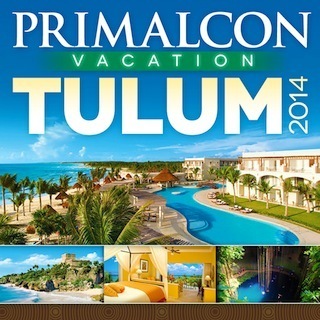 After four wonderful years of PrimalCon, we have built some tremendous momentum in making this total immersion retreat a fixture in the ancestral health community. We’ve received many positive reviews and facilitated global connections, but it’s also critical to note that I’ve absolutely had the time of my life at all five PrimalCons Iâve attended!
After four wonderful years of PrimalCon, we have built some tremendous momentum in making this total immersion retreat a fixture in the ancestral health community. We’ve received many positive reviews and facilitated global connections, but it’s also critical to note that I’ve absolutely had the time of my life at all five PrimalCons Iâve attended!
Iâm here to share some exciting news about our 2014 PrimalCon plans, and hope you can join me and several other leaders in the ancestral health world for an experience you will never forget. This post details the first-ever vacation-style PrimalCon at the Dreams Tulum in Mexico, March 1st-6th, 2014. (We are moving our annual Oxnard event to the dates of September 25-28, 2014. Details coming soonâ¦)

Vacation To Loom! While the current template of a three-day, action-packed PrimalCon immersion experience is fantastic, I started to dream up an event that would balance the fast-paced energy of PrimalCon weekend. What if everyone just decided to take a relaxing vacation, celebrate the Primal lifestyle, and hang out together at a luxurious all-inclusive tropical beach resort renowned for its five-star cuisine and situated in the shadows of some magnificent Mayan ruins? How about in early March â escaping the rain, snow and cold across the US, Canada, Europe? We could throw in a mix of lectures in a first-class conference facility, engage in some fun outdoor activities, luxuriate in plenty of poolside and beachfront chill timeâ¦all in the company of an exceptional presenter lineup and devoted Primal enthusiasts from around the world.

Well, turns out dreams really do come true, and Dreams Tulum (yep, our planned vacation destination is pronounced, “to loom”!) is the destination for the first-ever PrimalCon Vacation on March 1st-6th, 2014! I cordially invite you to join me, Robb Wolf, and others for a proper vacation and magnificent Primal experience next March. Following are details about this amazing facility, the local excursions we have planned to swim with dolphins and go back in time to explore Mayan civilization, and our awesome lineup of expert-guided fitness activities and presentations. Weâve negotiated a great rate with this all-inclusive resort to offer a vacation where one payment covers just about everything from the moment you land until you head home with your free tan.
CLICK HERE to learn more about PrimalCon Vacation Tulum. Read the description carefully to learn about some top secret early registration benefits!

July 16, 2013
5 Chemicals in Cosmetics You Should Avoid
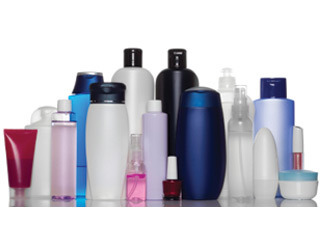 Have you ever wondered just what’s in all those products you slather, spray, spritz, apply, and rub onto your body? I mean, who hasn’t tried to kill time in the shower by hunkering down with a good shampoo bottle ingredient list? It’s a laundry list of unpronounceable words separated by dozens of hyphens. In short, it all appears to be a big bottle of chemicals. Now, there’s nothing inherently wrong with a “chemical.” Most everything can be called a chemical; ever heard of dihydrogen monoxide? But not all chemicals are benign, particularly the manmade, industrial ones created to fulfill a specific purpose in a product. They likely do their intended job very, very well, but it’s difficult to impossible to account for any other effects a chemical might have on an organism.
Have you ever wondered just what’s in all those products you slather, spray, spritz, apply, and rub onto your body? I mean, who hasn’t tried to kill time in the shower by hunkering down with a good shampoo bottle ingredient list? It’s a laundry list of unpronounceable words separated by dozens of hyphens. In short, it all appears to be a big bottle of chemicals. Now, there’s nothing inherently wrong with a “chemical.” Most everything can be called a chemical; ever heard of dihydrogen monoxide? But not all chemicals are benign, particularly the manmade, industrial ones created to fulfill a specific purpose in a product. They likely do their intended job very, very well, but it’s difficult to impossible to account for any other effects a chemical might have on an organism.
That’s where I come in. I don’t use a ton of cosmetics – which, for today’s purposes, I’ll define as any product you apply to your body to clean, moisturize, beautify, or cover up or improve an odor – but many of my readers do, and they want to know the effects of what they’re putting on and into their bodies. Today, I’ll discuss some of the most common and problematic cosmetic ingredients, both from a personal and environmental health standpoint.
Parabens
Although parabens are sometimes used as food preservatives, the majority of urinary parabens derives from nondietary sources like cosmetics, primarily, where they are used to extend shelf life. We now know beyond a doubt that humans can absorb parabens from makeup through the skin. Okay, so parabens are absorbed transdermally and show up in your urine. Does that actually matter? Well, the blogs of conventional skincare apologists would have you believe that the presence of parabens in urine means that the body is doing its job and fully eliminating toxins. Recent human studies, on the other hand, suggest a link between urinary paraben levels and certain health conditions, such as sensitivities to airborne and food allergies, elevated stress hormones in pregnant mothers and their newborn children (who, by the way, are showing up with parabens in their first urine!), and DNA damage to sperm.
Furthermore, not all parabens are eliminated through the urine (contrary to the apologists’ claims). Some is retained in plasma, and these plasma parabens are far more stable than urinary parabens, even when stored at 37 degrees celsius for 30 days. It seems clear that urinary paraben levels offer an incomplete picture. Even scarier, parabens have estrogenic activity and show up in the vast majority of breast cancer tumors. That’s not proof of guilt – recall the presence of cholesterol in atherosclerotic plaque being used as “proof” of cholesterol’s causative role in heart disease – but it’s intriguing evidence, however circumstantial (plus, whereas cholesterol is manufactured by the body, parabens are not and therefore deserve far more scrutiny).
Where to find them: Shampoos, conditioners, makeup, toothpaste, lubricant, shaving gel, moisturizers, sunscreens.
Other names: Just look for any word with “paraben” as the suffix in the ingredient list. It’s pretty much everywhere.
Phthalates
Being plasticizers, phthalates are most abundantly found in plastics, but they also show up in most cosmetics, especially nail polish (to keep the polish from becoming brittle on the nail) and synthetic fragrance (as a preservative). Like most other plastic compounds, phthalates are endocrine disruptors with the ability to negatively affect a whole host of physiological functions. In animal studies, phthalates have anti-androgenic effects (they counter “male” sex hormones) and affect fetal development, particularly of male sexual function. The biggest effects are seen in utero, when the fetus is most vulnerable.
Human studies are primarily observational. One recent study found that women with the highest levels of certain cosmetics-related phthalates in their blood were at an elevated risk for diabetes. Another discovered a link between phthalate blood levels and obesity in children. They have also been linked to ADHD, altered thyroid function, breast cancer, decreased motor and mental development in children, and “less male-typical play behaviour in boys.”
The combination of observational studies coupled with potential physiological mechanisms (endocrine disruption) make me pretty suspicious of phthalates. Of course, much of our exposure to the chemicals comes from plastics and the ambient environment, but that doesn’t mean we shouldn’t limit exposure through cosmetics, too.
Where to find them: Nail polish, fragrance, hair spray, deodorant.
Other names: Fragrance almost always contains phthalates. Sometimes, ingredient names will have the suffix “phthalate,” but you can’t always rely on that. Acronyms of some phthalates used in cosmetics include DEP, DBP, and BzBP. You know what? Just be wary of that “phth” (how the heck do you even pronounce that?) because it shows up in the middle of words, too.
Triclosan
Triclosan is essentially an antibiotic. Although it’s being phased out, it still appears in some hand sanitizers. Yes, triclosan does kill bacteria and fungus. Yes, it’s even been shown to be better at that than soap and water. But that comes at a big cost.
A recent French paper put it nicely: triclosan is a resilient chemical, making it off our bodies, down our drains, and into our lakes, rivers, oceans, and even drinking water. Fish and people alike have it in their bodies, and triclosan also reacts with chlorine and ozone to form toxic dioxins. Most importantly, like any antibiotic that’s used flagrantly, there’s evidence that it contributes to antibiotic resistance in bacteria. The fact that people tend to use it to ward off disease-causing bacteria means that those disease-causing bacteria are developing resistance. Triclosan trains them.
This is pretty clear cut. Just use soap and water, or alcohol-based hand sanitizers.
Where to find them: Hand sanitizers, deodorants, certain toothpastes.
Other names:Â Irgasan DP-300, Lexol 300, Ster-Zac, cloxifenolum.
Fragrance
Fragrances are exactly what they sound like: synthetic compounds added to products to make them “smell good.” I put that in quote marks because fragrances can be truly overpowering and downright unpleasant, in my opinion. Let’s just say that they “add odors” to products.
The real problem with fragrance, other than, well, the smell, is that fragrance recipes are considered trade secrets. This means companies don’t have to disclose the chemicals contained in a particular fragrance. They can just add “fragrance” to the ingredients list and go on their merry way. Unfortunately, most synthetic fragrances contain pthalates, which I’ve already covered, and synthetic musks, which have been shown to impair endogenous cellular defense mechanisms. In other words, synthetic musks may hamper our cells’ ability to detoxify, thereby leading to excessive exposure to otherwise easily detoxified toxicants. They’re persistent bastards, too, as musk residues show up in the ocean, in blood, in breast milk, and in babies. American breast milk, for example, almost invariably contains fragrances, up to five times as much as breast milk from Germany or Denmark. Many fragrance ingredients are also allergens, making fragrance one of the most common triggers for people with allergies (PDF).
Where to find them: Obviously, you’ve got your colognes and perfumes. If a cosmetic is scented, it also likely contains a fragrance. That goes for soaps, lotions, deodorants, and laundry detergent.
Other names: Parfum (classy, eh?) or aroma.
UV-filtering chemicals
Many sunscreens use UV-filters like benzophenone and oxybenzone for their UV-blocking properties, but they also possess a hidden feature: endocrine disruption. Certain forms of benzophenone, for example, inhibit the action of thyroid peroxidase, an enzyme necessary for the production of thyroid hormone. Another study showed that application of sunscreen containing benzophenone-2 for five days lowered T4 and T3 thyroid hormones in rats. Later, researchers examined the estrogenic effects of another UV-filter used in sunscreen – octyl-methoxycinnamate – and found that typical amounts were enough to disrupt hormonal function and exert other, non-endocrine health effects when applied to rat skin. That might not a problem if UV-filters in sunscreen weren’t designed to be absorbed into the skin, and therefore the body, nor if every expert weren’t telling us to slather a quarter cup full all over our bodies at the first hint of sunlight.
It’s also worth mentioning that UV-filtering chemicals often have even more drastic effects on wildlife, like the zebrafish, in whom low amounts of oxybenzone exert multigenerational effects at the gene transcription level.
The best part of all this? It’s not even effective against the development of melanoma! In fact, one study found a positive association between sunscreen usage and melanoma incidence.
Where to find them: Anything containing sunscreen.
Other names: Benzophenone, oxybenzone (benzophenone-3), octyl-methoxycinnamate, para-amino benzoic acid (PABA), 3-benzylidene camphor (3-BC), 3-(4-methyl-benzylidene) camphor (4-MBC), 2-ethylhexyl 4-methoxy cinnamate (OMC), homosalate (HMS), 2-ethylhexyl 4-dimethylaminobenzoate (OD-PABA). These are different chemicals with similar effects.
There are other potentially harmful cosmetics chemicals, like the “dirty dozen of cosmetics,” but I found these five to have the most evidence of serious harm and cast the widest net of influence across the sexes. I hesitate to ask you to lose sleep over every little chemical that might do us harm when we have much bigger fish to fry in the path toward health, including food, fitness, sleep, stress, sun, and community. These five deserve scrutiny, though.
Three major problems with most of these chemicals exist, as I see it:
1. They tend to accumulate in the body. Some gets excreted, but not all.
2. We use them frequently, oftentimes every single day. Small, one-time amounts of some of them might be okay. When you continuously slather it all over you, day in and day out, the problem compounds. Short term studies can’t account for that.
3. They often have external effects, whether it be drug resistance of bacteria, environmental accumulation, or developmental effects in unborn fetuses.
So, what about you guys? Have you been paying attention to what you put on your body? Have you noticed anything from being more selective with your cosmetics? Have you shunned them altogether? Let me know!
Get the 7-Day Course on the Primal Blueprint Fundamentals for Lifelong Health Delivered to Your Inbox for FREE

Mark Sisson's Blog
- Mark Sisson's profile
- 199 followers



